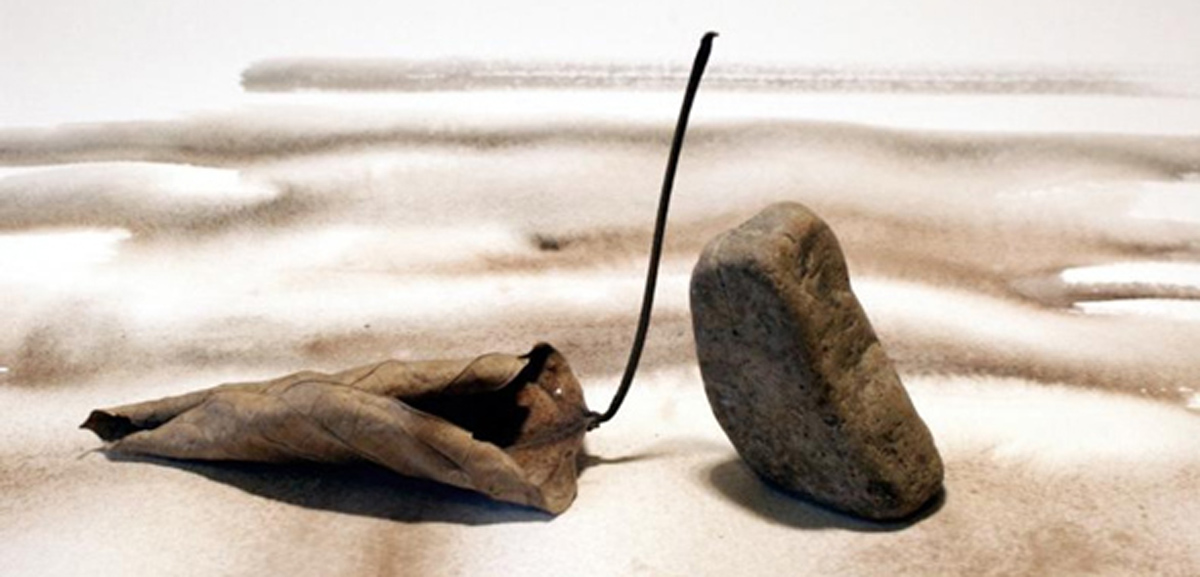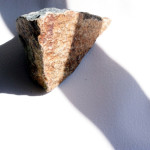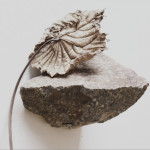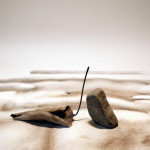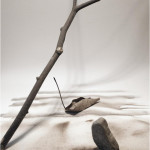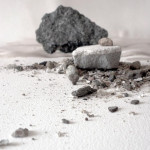From these installation photos, I also attempted to offer the idea of Simplicity which is embodied in many cultures, especially the Japanese traditional culture of Zen Philosophy.
I placed some stones and leaves randomly on the desk in confident spontaneity. The compositions of these stone, leaf and wood installation configurations are arranged based on the perspectives that I have experimented before but it was after some trials and errors that I found that it would be much better to create a deeper perspective with a simple backdrop for the objects in the foreground. That means I discovered it would create a better perspective to shoot the objects with art paper as the backdrop rather than capturing them lying flat on the desk.
According to one of the principles of Wabi-Sabi art, “The use of space is not just restricted to the space into which an object is placed, but also the space within it”. There is a need to provide visual space so the non-material aspect of the work can interact with and balance its material counterpart.
I subsequently created another background with the use of water color. I tried a “washing” process to create a web-on-web effect on the art paper in order to enrich the background with more layers, giving a feel of “landscape” to it – in a way similar to a seafront and the sky. I found that I had a better result in working this way.
But at the same time, I also wanted to examine the effectiveness of using the concept of installation and still-life to explore the possibility of creating 2-D collages and collages with my “collected objects”, of stones, woods and leaves.
The Japanese aesthetics of Wabi-Sabi values the qualities of simplicity in plain objects.
It appreciates the absence of unnecessary features to view life in quietness and reveals the most innate character of materials. For example, the Japanese flora art, also known as Ikebana (Ikebana (生け花), “living flowers”) is the Japanese art of flower arrangement, also known as kadō (華道), the “way of flowers”) has the meaning of letting flower express itself.
People cut off the branches, leaves and blossoms from the plants and only retain the essential part from the plant. “This is intended to convey the idea of essential quality and innate character in natural objects”.
What I have learnt from this practice is that, the idea of creating Wabi-Sabi art, no matter through a simple picture, installation, collage, and or photo, is not a forced process but “an achievement of an artist to reach the levels where conscious efforts and thoughts are abandoned to the dictums of the unseen forces that guide our lives” . It is therefore not the spirit of the artist in the moment of performance that is the criteria by which art is judged but a human sense and appreciation of imperfection and nature.
Zen concepts of simplicity transmit the ideas of freedom and essence of living. Simplicity is not only an aesthetic value, it also has a moral dimension that looks into the nature of truth and reveals the inner qualities of materials and objects for the essence.
That is the reason why I tried to set up the installation in a 2-dimensional space such as putting the rice paper partly on the wall and partly on the desk with some Chinese calligraphic brushstrokes in order to create an atmosphere of Chinese landscape painting.
